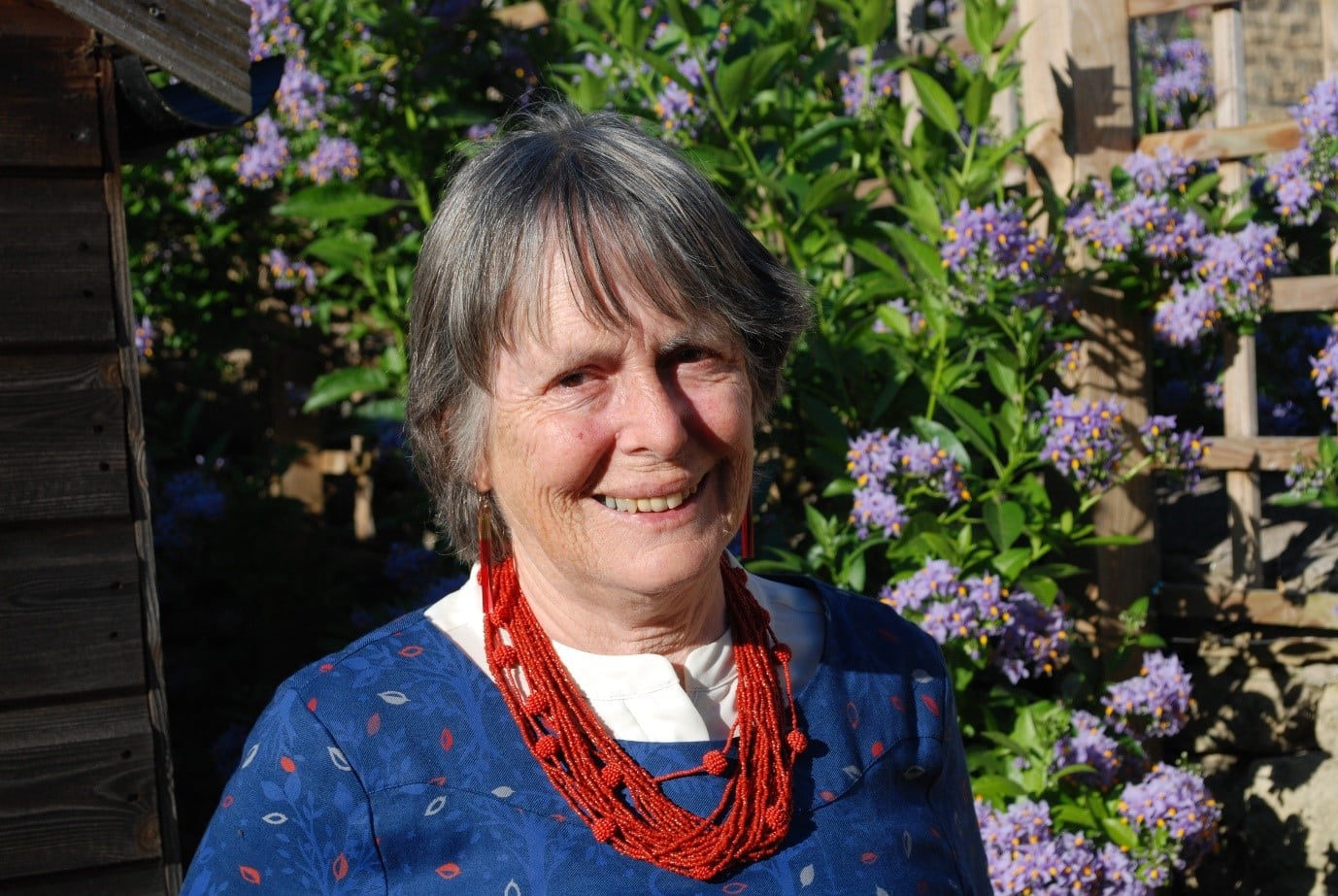How do you stay warm in your house without central heating?
Wednesday 31st Jan 2024, 12.30pm
How do we battle the energy use and soaring costs required to keep our homes warm?
We spoke to Dr Brenda Boardman from the Environmental Change Institute about the best ways to keep out the winter chill. Did you know that draughts not only let cold air in, but they also push the warm out of your home? And that sitting or sleeping next to external walls can make you colder?
Discover simple and inexpensive methods you can try to stay toasty, starting with the idea of heating the human rather than the home. Tune in to learn more!
Emily Elias: It’s that stage of winter where I’m beginning to feel like I will never see the sun or feel warmth again. But maybe science can fix this. Okay, maybe not the sun part, but at least the feeling warm part.
On this episode of the Oxford Sparks Big Questions Podcast, we’re asking ‘how do you stay warm in your house without cranking up the heating’?
Hello, I’m Emily Elias, and this is a show where we seek out the brightest minds at the University of Oxford and we ask them the big questions. And for this one, we’ve found a researcher who is armed with tips to keep us toasty.
Brenda Boardman: I’m Dr Brenda Boardman from the Environmental Change Institute at the University of Oxford. I’m a retired academic, except that, of course, I haven’t retired. I’ve looked at the energy use in housing for over 40 years.
Emily: Okay, so Brenda, we’re here to talk today about some really practical things that we can do that won’t cost us a ton of money to stay warm. What is your top tip of something that I can do to stay warm in my house without resorting to cranking up the thermostat and costing myself a ton of money in energy costs?
Brenda: I think my top tip, Emily, is to get rid of draughts. What you have to realize is that not only are draughts extremely uncomfortable, nasty cold air around your feet, what they are also doing is pushing out, somewhere, the warm air that you’ve already heated up. So, they’re both uncomfortable and a source of heat loss. So what you want to do is get rid of that cold air blowing into your house, into your flat, wherever you live, as quickly as possible.
Emily: Well, how do I find a draught?
Brenda: Well, usually you just put your hand out and you can feel it. If you want to be really adventurous, you take a candle, but that, of course, see where the flame flickers. but most people know where there is a draught. And if you sit in a darkened house and you can see light from outside coming in, then you also know where there’s a gap, around your windows, around your door, through your letter box, etcetera.
Emily: And what kinds of things can I use to block the draft then?
Brenda: Well, you can use anything, but there are relatively cheap draught proofing materials. Sort of strips of p-shaped rubber or fuzzy felt stuff stuck to a sticky strip. Or if it’s a letter box, some thick brushes, so the letter can get through, but the drafts are impeded.
Emily: Is there a material that works better than others? Like when I was younger, my mom and I used to cellophane our windows, like with this big giant plastic cellophane that we’d tape around it and then we’d use a hairdryer to make it all tight. Does that work?
Brenda: Well, that’s not about draughts, that’s about a cold surface and that’s one of the other things to do it. Just as radiators radiate heat and therefore you can feel you’re near a radiator, so cold surfaces radiate cold. So if you can reduce the feel, the touch of that cold surface by putting a plastic sheen over it or bubble wrap or something like that, then you have reduced the radiating cold. It doesn’t prevent it being entirely cold, but it does help quite a bit.
Emily: Wait, what would I do with bubble wrap?
Brenda: Same as you do with your cellophane. You just stick it round over the glass. I mean, it lets the light in, it doesn’t let people see through and it actually reduces, the amount of cold that’s coming into the house. That’s because the little bubbles are actually little pockets of air or vacuum and they’re preventing the cold being transmitted across the surface. Air is a wonderful insulator. Wherever you want, wherever you can.
You want to get still static air trapped to insulate you, between you and the cold outside.
Emily: So bubble wrap does that for me on your windows.
Brenda: On your windows.
Emily: I didn’t know that. What about other things that I could use that I might happen to have handy around the house to use as an insulator to try and keep me warmer?
Brenda: If you’ve got old curtains, or you can go to the local charity shop and buy some old curtains. Seat curtains are excellent, especially, of course, at night, whether across the windows or across the front door, at insulating you from that cold. I mean, I go round and pull our curtains the minute it gets a tiny bit dark just to keep the cold trapped between the curtains and the windows and not coming into the room.
Emily: What about how my room is set up? Should I pay attention to exterior walls or anything like that? Because those always tend to be the coldest walls.
Brenda: Yeah, they are. The external walls are almost definitely the coldest walls in your house. They’re probably not quite as cold as your windows, but they’re the next worst thing. And you just want to keep away from them. So don’t sit next to a wall, don’t have your bed next to a wall. And if you can put things like a bookcase or a wardrobe up against the external wall, rather so that it’s a sort of barrier and insulation.
If you get a lot of condensation of mould in your property, in your home, then be very careful because if you trap air against a cold wall and there’s a lot of moisture in your home, then you could get condensation of mould and that is definitely not a good thing. So keep looking and if it’s a movable bookcase or wardrobe, pull it out a bit and look behind it to make sure it’s not getting nasty.
Emily: Yeah, it is also the time of season for mould and all sorts of awfulness that can really take hold. Is there a way that we can stay warm and not have mould without having to open the window to let the.
Brenda: Yes.
Emily: Do you know what I mean? Because it feels like there’s like this weird, sort of like, cat and mouse game you’re playing with mould, that you want to have the window open to ventilate, and so you don’t get mould. But then when you open the window, you’re letting all the cold air in. How do you battle mould and still stay warm?
Brenda: Well, the most important thing is to open the window in the bathroom or the kitchen, which is where you’re generating the moisture, the steam, that is going to then condense against the cold surface somehow somewhere in your house. So, most of all, extract moist air where you generate it. Obviously, if you do things like dry your clothes and bedding and things around where you live, which quite a few of us do, that’s going to create moisture. But mould comes from a combination of cold surfaces and damp air. What you are doing by opening the window is trying to get rid of that moisture. But don’t do it in a room where there is no moisture generated. Do it in the room where the moisture is generated.
Emily: If you were going to splash out on a little bit of money on something to keep you warm, would you splash out on a space heater, or would you hold that in your bank account and just keep it for a rainy day?
Brenda: Well, I’d splash out on draft proofing, very definitely. I’m assuming that you want to splash out on something that’s portable so that you can take it with you. In terms of reducing your fuel bills, another thing you can do is buy low energy light bulbs, LEDs, light emitting diodes, because they use much less electricity than most of the light bulbs that you might otherwise have in your house. And if you move, you can just unscrew them and take them with you.
But, if I was going to splash out, I wouldn’t buy an electric radiator unless I lived in a very big property with very few opportunities to control the way the gas central heating is working. Gas is much cheaper than electricity. So if you switch out of gas into electricity, you do risk having very large bills to heat a tiny amount of space. if you live in a relatively well controlled house, in other words, there are thermostatic radiator valves on each, well all but one of the radiators, use those. This is a little valve that you turn up and down a bit like a thermostat on each radiator. So if there’s a room which you’re not using or not using very much, go and turn the heating off through that thermostatic radiator valve in your room. If you don’t have those and you have a landlord, I would definitely ask to have them fitted because it’s a way of enabling you just to have central heating on, gas fired central heating on, in the rooms that you’re living in.
Emily: What would you then spend money on if you’re saying don’t buy a portable radiator?
Brenda: If I was at risk of mould, I might just buy a dehumidifier. I don’t know about that. So the moisture is taken out of the room so that it can’t then create mould.
Emily: Okay, so the better of a buy is dehumidifier over the radiator. What about this whole talk about heating the human as opposed to heating the room? Is that where our minds should be at when it comes to trying to stay warm this winter? Is that like, accurately sage advice?
Brenda: If you come from Japan, you know that’s sage advice. That’s the way they have been heating their homes traditionally for a very long time. Increasingly, I don’t know much about these, Emily, but there are things on the market which are sort of like an electric blanket that’s shaped into something that you can sit in or have round you rather than on the bed. And I do have friends that swear by these and say that makes them really lovely and comfy in the evening watching telly rather than putting on the heating so much.
Emily: I feel like I’m a person who has got a system of putting a hot water bottle into my trousers, kind of to walk around.
Brenda: Very sensible. O=One of the Christmas presents I saw this year for the first time was a really long hot water bottle. I mean, it was well over a meter long, so it would be the length of all of your legs. I think that was about sort of £25, £30. I don’t know.
Emily: Is the cost of turning on the kettle to heat the water for the hot water bottle more efficient than just putting on the heating for a little bit?
Brenda: It’s almost definitely better to locate the heating close to you rather than the whole room. It depends a bit on how many people there are. If there’s three or four people, then a heated room is more comfortable and quite sensible. Hot water bottles are always good, but you don’t always get the whole of you comfortably warm with just one hot water bottle. So it’s a bit of a slightly desperate measure.
Emily: Alright Brenda, I feel like we’ve gotten a lot of tips here. Any other wisdom that you want to impart with us before we say goodbye?
Brenda: The way you use electricity, the expensive fuel in the house, also impinges on your total energy bills. So make sure you don’t overfill the kettle, for instance. Just once, completely empty your kettle, fill up a mug that you want to drink from with cold water and pour it into the kettle and see how little it is. That’s almost all you need to heat every time you want a cup of tea. So don’t half fill it and waste a lot of hot water in a kettle. There are just ways in which, like that, we can be a little bit sensible.
Emily: I am guilty of overfilling the kettle, but then I just add it to the hot water bottle so that I’m constantly heating myself!
Brenda: I mean obviously the other thing is, I mean I am sitting here, it’s about two degrees outside here at the moment in Oxford, and I’m sitting here in several layers of clothing and with lovely warm slippers on. So keeping yourself warm with layers of clothing is good because what you’re then doing is trapping air between different layers of clothing so that, again, your insulating yourself against feeling chilly.
Emily: So it’s all about trapping air.
Brenda: Trap your air, yes, and don’t let it into your property. Get rid, do that draught proofing.
Emily: This podcast was brought to you by Oxford Sparks from the University of Oxford with music by John Lyons and a special thanks to Dr Brenda Boardman, who would love it if you got in touch with your own tips of how to stay warm in the winter.
Tell us what you think pf this podcast. We are on the internet @OxfordSparks. You can find our website oxfordsparks.ox.ac.uk.
I’m Emily Elias. Bye for now.





